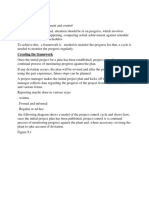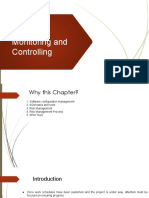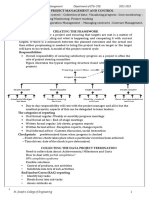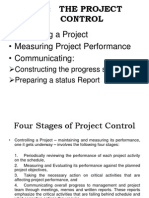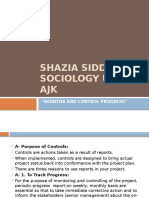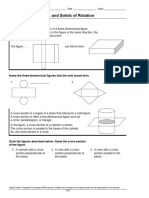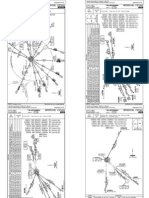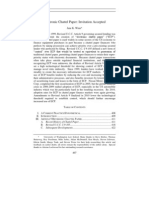0% found this document useful (0 votes)
201 views12 pagesCH 9 Monitoring and Control
This document discusses project monitoring and control. It describes creating a framework to monitor progress against the initial project plan. If progress deviates from the plan, replanning may be needed. The project manager is responsible for ensuring satisfactory progress, while collecting and reporting data on delays, quality issues, functionality, and costs. Progress is visualized using tools like Gantt charts, slip charts, and timelines to see if the project is on track or requires rescheduling. Costs are also monitored against the budget. Earned value analysis assigns values to tasks based on their original budget to track progress financially.
Uploaded by
karunya vCopyright
© © All Rights Reserved
We take content rights seriously. If you suspect this is your content, claim it here.
Available Formats
Download as DOC, PDF, TXT or read online on Scribd
0% found this document useful (0 votes)
201 views12 pagesCH 9 Monitoring and Control
This document discusses project monitoring and control. It describes creating a framework to monitor progress against the initial project plan. If progress deviates from the plan, replanning may be needed. The project manager is responsible for ensuring satisfactory progress, while collecting and reporting data on delays, quality issues, functionality, and costs. Progress is visualized using tools like Gantt charts, slip charts, and timelines to see if the project is on track or requires rescheduling. Costs are also monitored against the budget. Earned value analysis assigns values to tasks based on their original budget to track progress financially.
Uploaded by
karunya vCopyright
© © All Rights Reserved
We take content rights seriously. If you suspect this is your content, claim it here.
Available Formats
Download as DOC, PDF, TXT or read online on Scribd
/ 12


